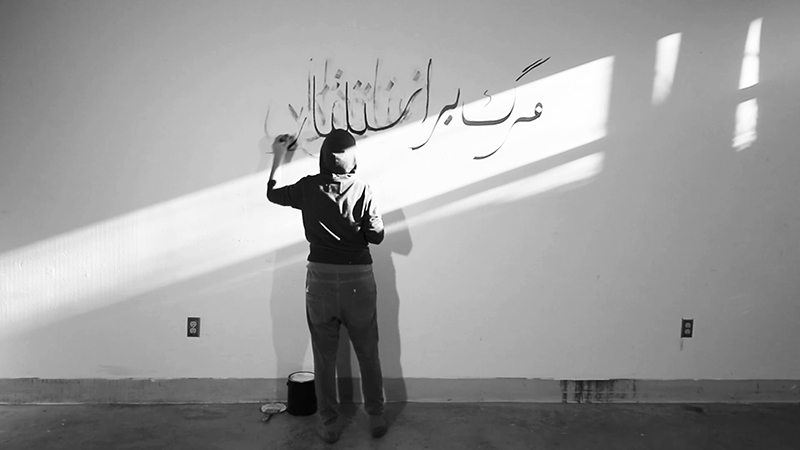Intervention
Mona Hedayati
Mona Hedayati is an Iranian-Canadian artist-researcher and a joint PhD candidate in interdisciplinary humanities at Concordia University, Canada and the digital arts doctorate program at Antwerp Research Institute for the Arts, University of Antwerp, Belgium. Her interdisciplinary research-creation draws on computation arts, posthumanism, memory, trauma, and affect studies. She has a BA in translation studies, an MFA in digital media and an MRes in social-political art and design.
Her projects focus on voluntary and involuntary human and nonhuman migrants, i.e., displaced people and cultural heritage, to interrogate positing the former as infiltrators into Western-dominant dynamics while the latter is often wilfully plundered to add cultural glamour to Western institutions. In this context, she has been examining the relationship between migrants and non-migrants by introducing audiences to arrangements that demand attention, investigation, and interaction.
Her recent research-creation work has been focused on issues around lived experience of migration where she responds through building performative and affective spaces towards alternative understanding of such experiences. Hedayati has exhibited and presented on her work internationally and across Canada at institutions such as Slade School of Fine Arts, University of Manchester’s Whitworth Gallery and University of St Andrews in the UK; Trinity College, Ireland; Kunsthal Extra City, Belgium; and Agnes Etherington Art Center at Queen’s University in Canada.


Artist’s Statement
Intervention (2018) is a documentation of a performance which explores the role of political wall writing as a form of mass mobilization with a historical predominance in Egypt, Iran and Palestine, manifested according to socio-political distinct tensions of each nation. Political dissent, when formal channels of democratic protest are non-existent, often sees anti-authoritative messages being taken to the walls over the past several decades, gesturing towards inherent systemic violence against the body politic. Hastily written by the protesters and carelessly erased by the state agents, political wall writing has a long archaeological presence in politically-unstable countries in the Middle East.
In this performance, I layer up these oppositional messages into the wall by writing one, painting it over and writing another on top. In so doing, I repeatedly occupy the role of the protester by writing these statements in Farsi, then the state agent by carelessly painting them over, allowing the layers underneath to show through. This process is meant to highlight the historical permanence of this practice regardless of reclaim of power by the state apparatus.
This form of activism problematizes the citizen-state dynamics by foregrounding the role of the activist as disruptor of the power relations: challenging the authority by claiming the wall as a tool of mass communication, before the figure of authority reclaims the power by the act of censorship i.e. painting over the writings.